You might’ve heard Akemi Look as Kitsune in the Call Of Duty franchise. You might also recognize her as the host of JX’23 earlier this year, a cross-cultural event highlighting Japanese innovations in the entertainment sector. There’s even a chance that you know Akemi as a Junior Olympic Champion–a detail that someone tried to casually slip into the pre-interview bio as if it wasn’t interesting as hell.
Obviously, the Olympics are the first thing I ask about when I sign in to my video chat with Akemi.
“I was on the US national team for rhythmic gymnastics,” Akemi tells me. She’s quick to clarify that it was the Junior Olympics and not the Olympics, as if that makes it any less impressive. “The gymnastics with the flipping is called artistic gymnastics. And gymnastics with the ribbons and the hula hoops and stuff like that, that’s called rhythmic gymnastics. So imagine the floor routine for artistic gymnastics, but instead of doing flips, we have these handheld apparatuses like the rope and the ball and the juggling clubs, that we toss 30 feet into the air and do crazy shit under, and then catch. And all of it is to music. Our costumes are like ice skating costumes and it’s a judged sport.”
I’m fascinated. I could probably scrap all of my pre-planned interview questions just to talk about this. But as riveting as I think that would be, Akemi says that she doesn’t talk much about her days as a gymnast, noting that her gymnastics career was a “very complex and complicated thing.”
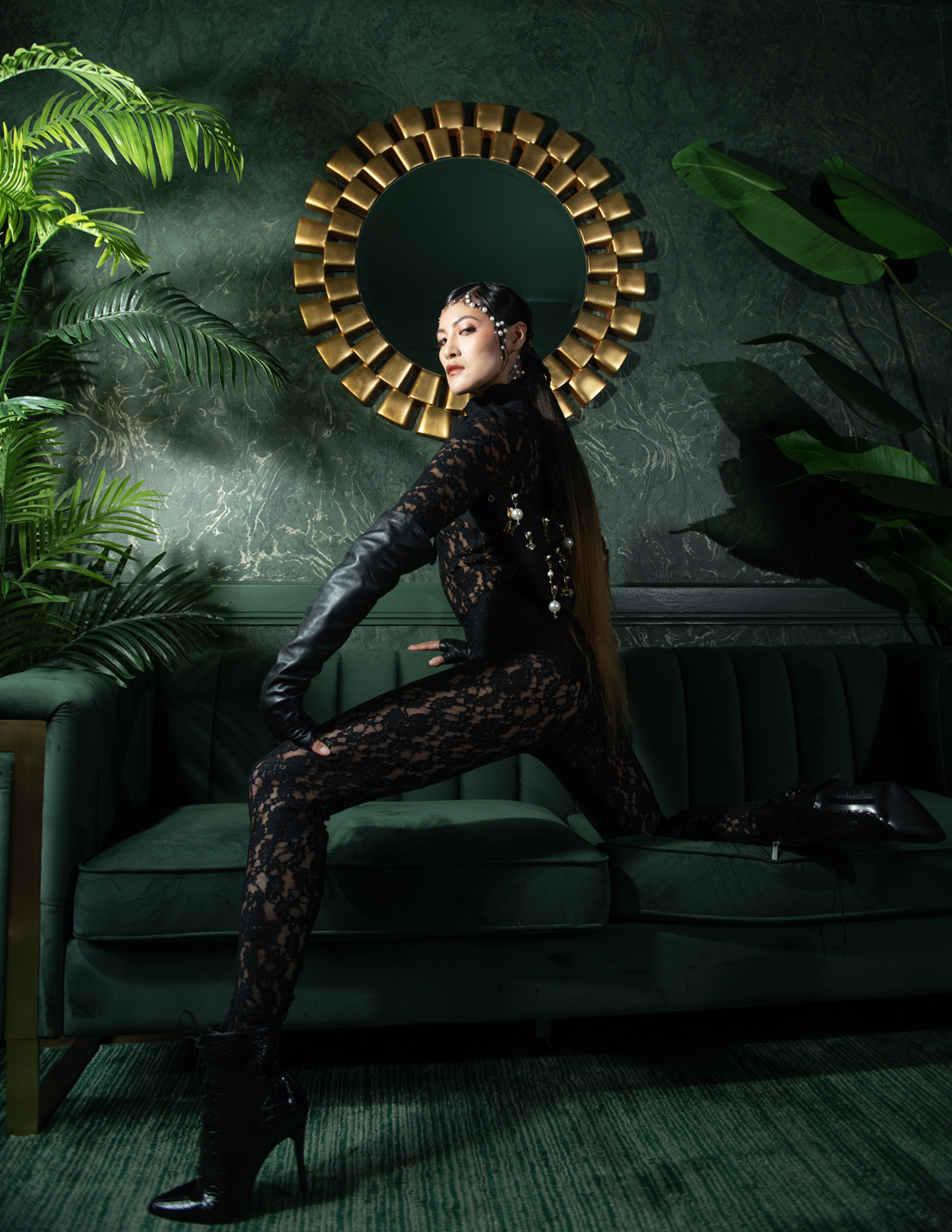
Lace Bodysuit: Sarah Regensburger @sarahregensburger_official Bow: MAIMI SADAI @maimisadai Gloves: Uncuffed Leather @uncuffedleather Boots: L’Atelier de Charlotte @adc.Charlotte
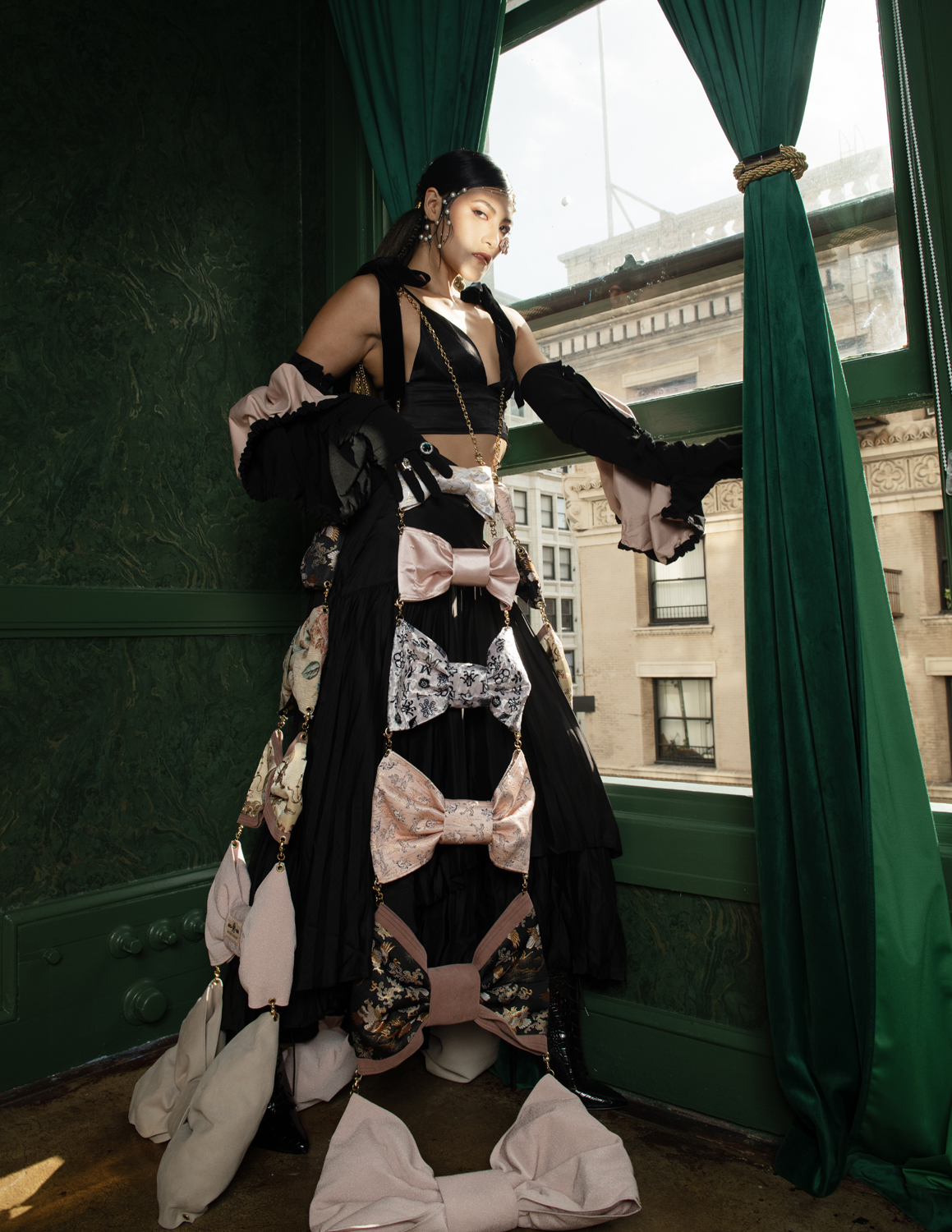
Bralette & Skirt: Le Réussi @le_reussi Bow dress: MAIMI SADAI @maimisadai Gloves: MAIMI SADAI @maimisadai Rings: Andréanne Patry @andreannepatry Boots: L’Atelier de Charlotte @adc.Charlotte
“I’m a survivor of Larry Nassar, and I was part of that entire lawsuit and sentencing and takedown,” Akemi says. “Which was incredibly traumatic. When I moved to LA from New York, I never told anyone that I was a gymnast because it brought up so much trauma. So people will find out later and they’re like, What? I had no idea you had this entire career! And I’m like, yeah, because every time I talk about it, it brings up extremely hard memories that I have to reckon with. So I tend to shy away from telling people about that aspect of my life, but it’s such a huge part of who I am. The discipline and focus and the artistry required for that sport left an incredible impact on who I am today. The artistry more than anything, I think.”
This becomes apparent as Akemi gives me the rundown on her post-gymastics career path. After moving home from the Olympic Center in Lake Placid, where she lived as a teenager while training for the world championships, Akemi found herself depressed and looking for an outlet for healing and self-expression. She turned to dance, going on to major in the subject at the University of Michigan–and then auditioned her way into a scholarship program at the Alvin Ailey School for Ballet and Modern Dance in New York.
“And then, crazy thing,” Akemi says. “I was walking down the street in New York City, wearing tennis shoes. And I stepped on some broken concrete on the sidewalk and blew my ankle out. All of a sudden I was on crutches and a boot. This was a year after I had moved to New York City to be a dancer, and now I can’t even walk. So I thought, is there another performing art that I haven’t explored yet that perhaps I could be interested in? So I decided, I’ll take an acting class while I’m waiting for my foot to heal.”
“So I took my first acting class,” Akemi continues. “And I just became completely infatuated and in love with the art form of acting. Because it was so beautiful to be able to step into another human being. And I think at first it came from a place of not only finding myself in a role but also a place of escaping into someone else. Being able to step into another character’s shoes, and think their thoughts and speak their words was so freeing for me, and illuminating in a way that I had never known was possible.”
From that moment on, Akemi knew that acting was the form of self-expression that she always wanted to stick with. I ask her what it’s like to be an Asian-American actress these days–or actually, I say it much less eloquently and ask her what she thinks about the “moment” that Asian representation is currently having in Hollywood, and then apologize for my dumb talk-show-host phrasing.
“It’s not dumb,” Akemi disagrees. “And it is having a moment. Honestly, I never thought I’d see anything like this. It’s like…” she pauses, thinking back on the early days of her acting career, and honest-to-god cringes.
“When I entered the industry over a decade ago, it was bad,” Akemi says. “It was bad-bad. Stereotyped roles, racist portrayals, and no agency over our own stories and storytelling. The roles I would get, the accents that I was being asked to do, it was one-dimensional characters of trophy wife, prostitute, and sex worker. It was always like, I’m a prop, or I’m here to just be the butt of the joke. And it was tough. It did a number on my self-esteem. I realized how much work had to be done on such a base level in terms of representation and storytelling in Hollywood. It was like they didn’t even see us as human and deserving of rich, full stories.”
“And if there was an Asian story that needed to be told, it was always told through a patriarchal, male, white lens,” says Akemi. “And as an artist, who knows that the perspective, you know, the person who’s telling the story is integral to the telling of the story, it was mind-boggling to me. Not to say that you can’t tell stories that are not your own, but at least know what your blind spots are. At least know when to bring in an expert on a certain subject or when to bring in a co-writer, someone who has that perspective. Consider, are you the best person to tell this story? And I think that’s a question that is often asked now in terms of storytelling in Hollywood, when it didn’t used to be. So I think we still have a lot of work to do, but it’s an interesting field to be in right now.”
This turns the conversation toward the recent SAG-AFTRA strike, where Akemi was out on the Los Angeles picket lines with many of her fellow actors. One of the issues that particularly worries her is that, through the use of rapidly advancing AI technology, studios could strip actors of the rights to their likenesses.
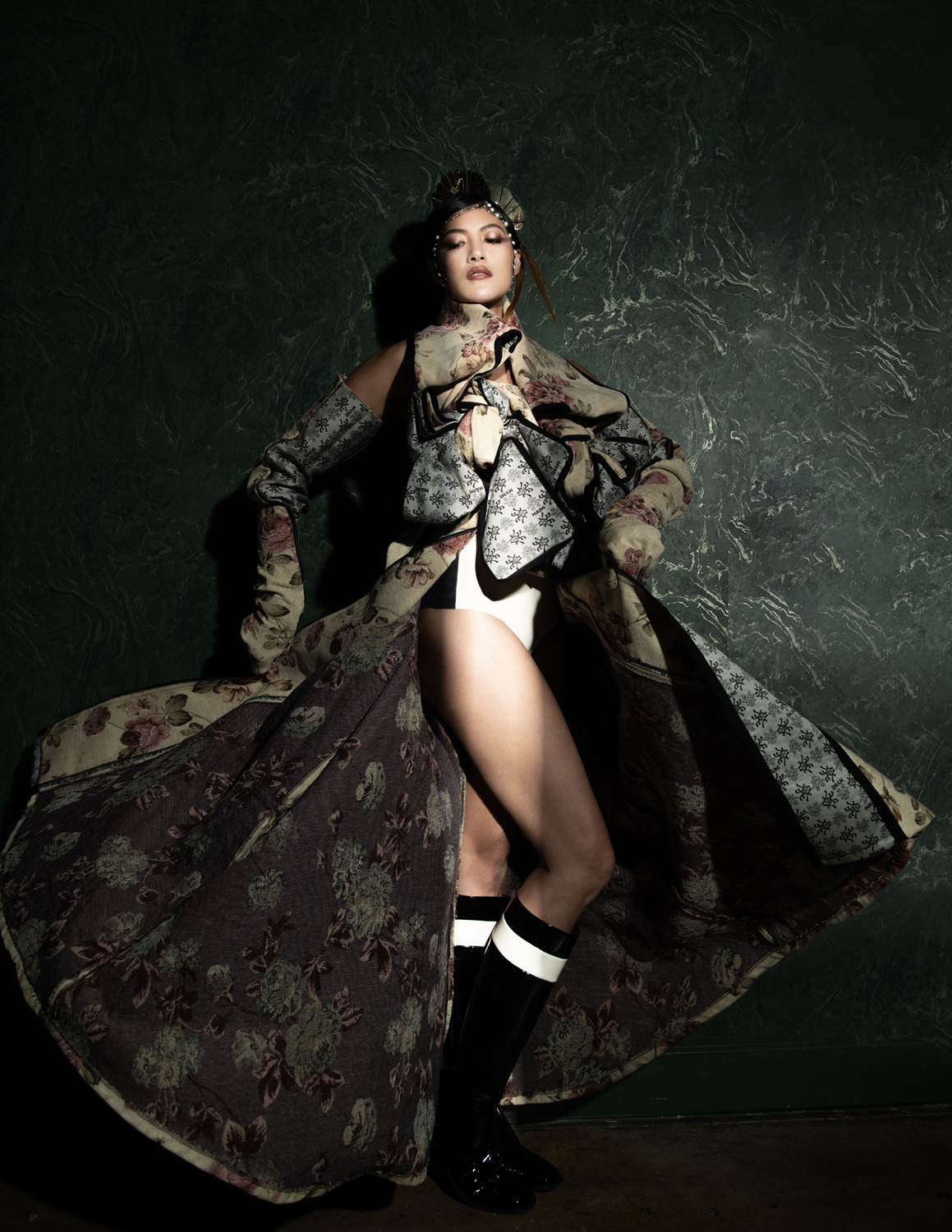
Latex Bodysuit: EMEL Fashion Gloves & coat: MAIMI SADAI @maimisadai Boots: L’Atelier de Charlotte @adc.Charlotte
“I think it’s so important,” Akemi explains. “The non-consent, the “in perpetuity” aspect of it, and zero compensation for it as well, I think those are the three biggest things. What happens after a performer or an actor dies? We have no say over how our image or likeness is being used? That’s terrifying, especially as an artist, right?”
Apart from the larger philosophical and technological implications, Akemi reminds me of the issues that lie at the foundation of every labor strike.
“I don’t even have SAG health insurance,” she tells me. “The majority of performers don’t make enough to have health insurance. And there’s such a big misconception, when people hear about the strike, that these actors are rich and spoiled. But SAG-AFTRA has 160,000 members. What people don’t see are the background actors, the day players, the people that are not the 1% of celebrities. Most actors in Los Angeles are still on their way to breaking out. Most are waiting tables, working as bartenders, holding down multiple side jobs to pursue their dream. And the fact that we can’t afford a living wage in the city is what we’re striking over.”
But apart from fighting for a living wage, Akemi has a few other pet projects up her sleeve.
“It kind of comes back to the photo shoot that I did, which I guess is the cause of this interview,” Akemi says. “So I’m half-Japanese and half-Cantonese. I’ve been trying to reclaim my Asian-American identity, finding out what that means for me. I was doing a lot of advocacy work, and I was invited to apply for a program that the Japanese consulate was doing. And so we all came together with the mission of building the bridge between Japanese culture and Hollywood, and to the US in general. We started this initiative called JX, which stands for Japan Crossover of LA, doing cross-cultural collaborations in food, fashion, music, art, entertainment, you know. I guess my title is creative strategist and consultant because I get to think at such a high level about how to build these connections that will foster innovation. And that’s really cool. And my other committee members have such incredible ideas as well. To be able to grow this to hopefully a global platform would be such a dream come true. We did our launch event in February of this year, and we brought over leaders from Japan. And I found this emerging Japanese designer, her name is Mayumi Sadae. And she designed all of the clothing that is in the photoshoot that we sent Ladygunn.”
“And then I have my own creative projects that are in development,” Akemi adds. “As a producer of film, I have a short film that hopefully we’re hearing back about a festival run. I think a big thing for me right now is having creative control and agency. As an actor, really, you don’t. You’re a paint color and you bring your soul to serve the story. I realized that in order for me to tell the stories that I actually want to tell, I have to write the stories that I want to tell. Writing gave me my voice back, I think, in a big way. Which is, as a woman of color, a big thing in America.”
But with the strike ending, Akemi is sure that she’ll be back to acting before long.
“I hope that I can get back to work and start auditioning again,” she says. “My passion is acting, number one, always.”
Read about JX and the LA Next Generation Japanese American Leaders Initiative here: https://aiptcomics.com/2023/02/14/japanese-american-leaders-initiative-present-jx-23/
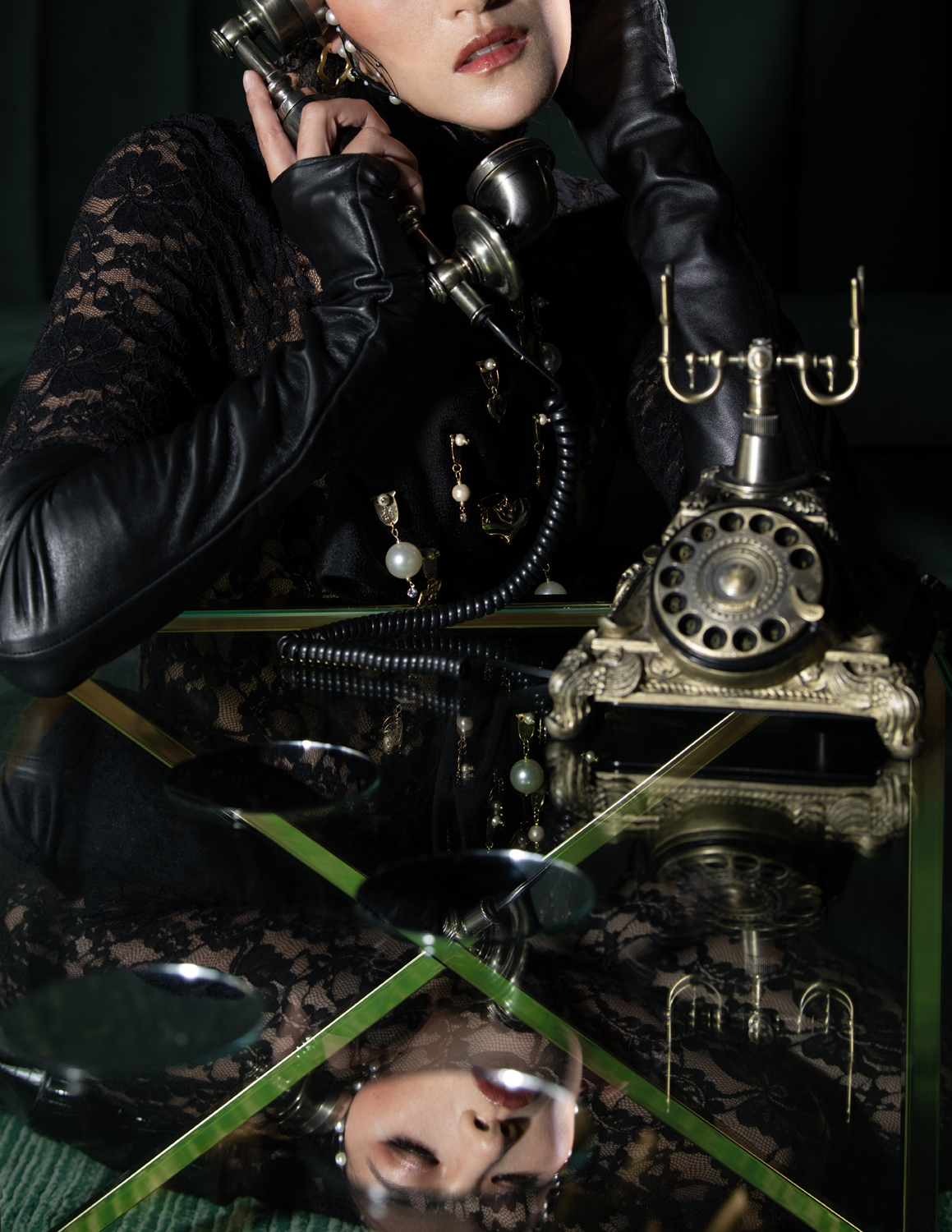
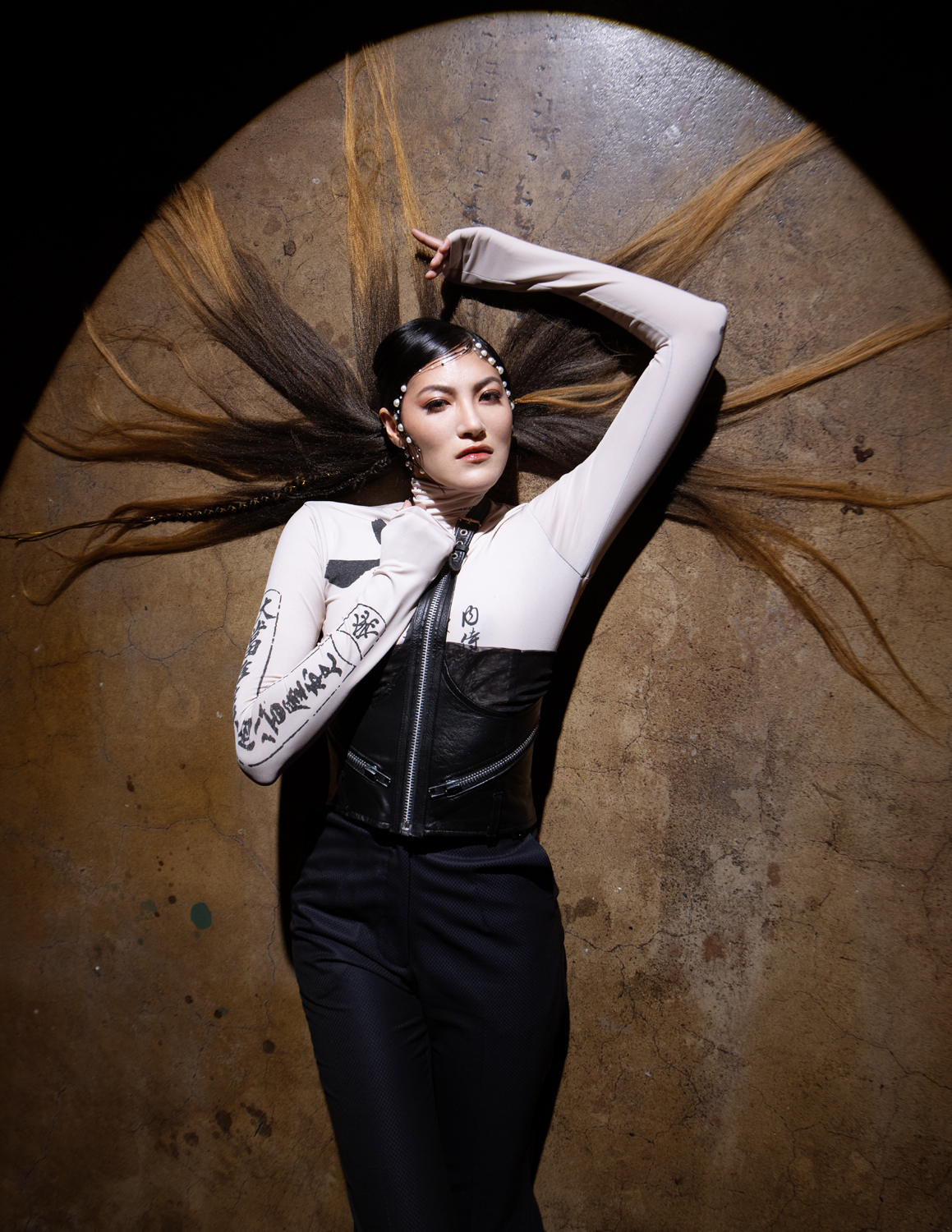
Top: MAIMI SADAI @maimisadai Corset: Uncuffed Leather @uncuffedleather Pants: Helen Anthony @helenanthonyofficial Shoes: The Standard Footwear @norieshoes
CONNECT WITH AKEMI LOOK:
OFFICIAL
